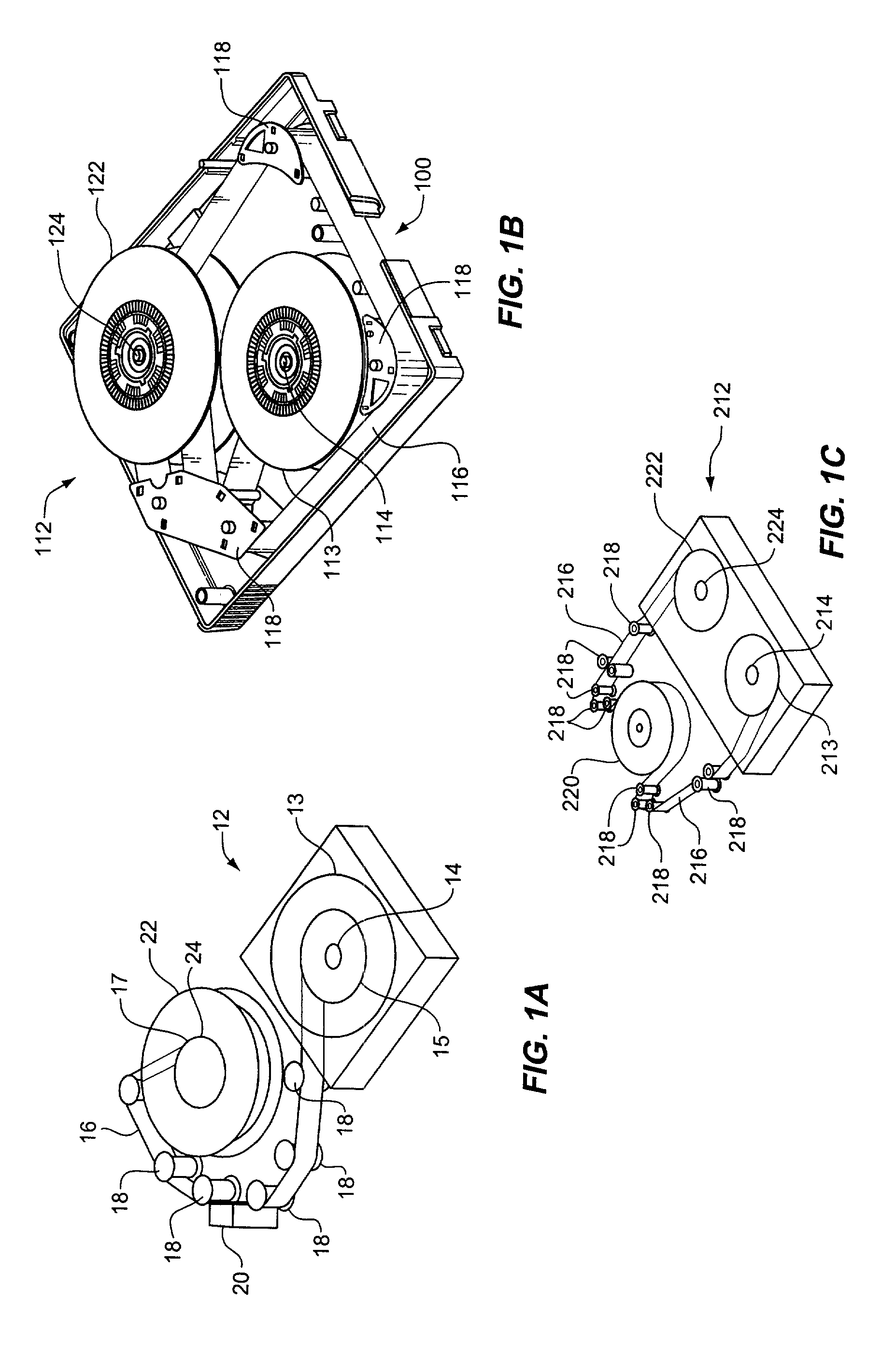System and method for reducing latency for serially accessible media
a technology of serial access and storage media, applied in the direction of moving record carriers backward/forward, instruments, maintaining head carrier alignment, etc., can solve the problems of media being tape has the disadvantage of a relatively slow access time, and disk media is relatively expensive when compared to other types of media, so as to reduce the access time and achieve the shortest access time effect of accessing
- Summary
- Abstract
- Description
- Claims
- Application Information
AI Technical Summary
Benefits of technology
Problems solved by technology
Method used
Image
Examples
Embodiment Construction
[0031]A dual reel cassette such as that shown in FIG. 1C is shown in various tape wrap stages in FIGS. 2A–2C. FIG. 2A shows a cassette where the tape 216a on supply reel 213 is approximately the same quantity as tape 216b on take-up reel 222. This tape is considered to have a tape load point at the midway point of the tape, the tape load point being the portion of the tape that would be adjacent to or in contact with a transducer in the tape drive when the tape cassette is initially loaded in the tape drive. By maintaining tape in this midway position—as opposed to being fully wound onto either reel—the average time to access a given linear position on the tape (i.e. the access latency) is one-half that of a fully rewound tape.
[0032]FIG. 2B shows an example where the majority of the tape 216 is on take-up reel 222 (as shown by 216b), with a relatively smaller portion of tape 216 on supply reel213 (as shown by 216a). If this were the state of the tape when the cartridge 212 were load...
PUM
 Login to View More
Login to View More Abstract
Description
Claims
Application Information
 Login to View More
Login to View More - R&D
- Intellectual Property
- Life Sciences
- Materials
- Tech Scout
- Unparalleled Data Quality
- Higher Quality Content
- 60% Fewer Hallucinations
Browse by: Latest US Patents, China's latest patents, Technical Efficacy Thesaurus, Application Domain, Technology Topic, Popular Technical Reports.
© 2025 PatSnap. All rights reserved.Legal|Privacy policy|Modern Slavery Act Transparency Statement|Sitemap|About US| Contact US: help@patsnap.com



